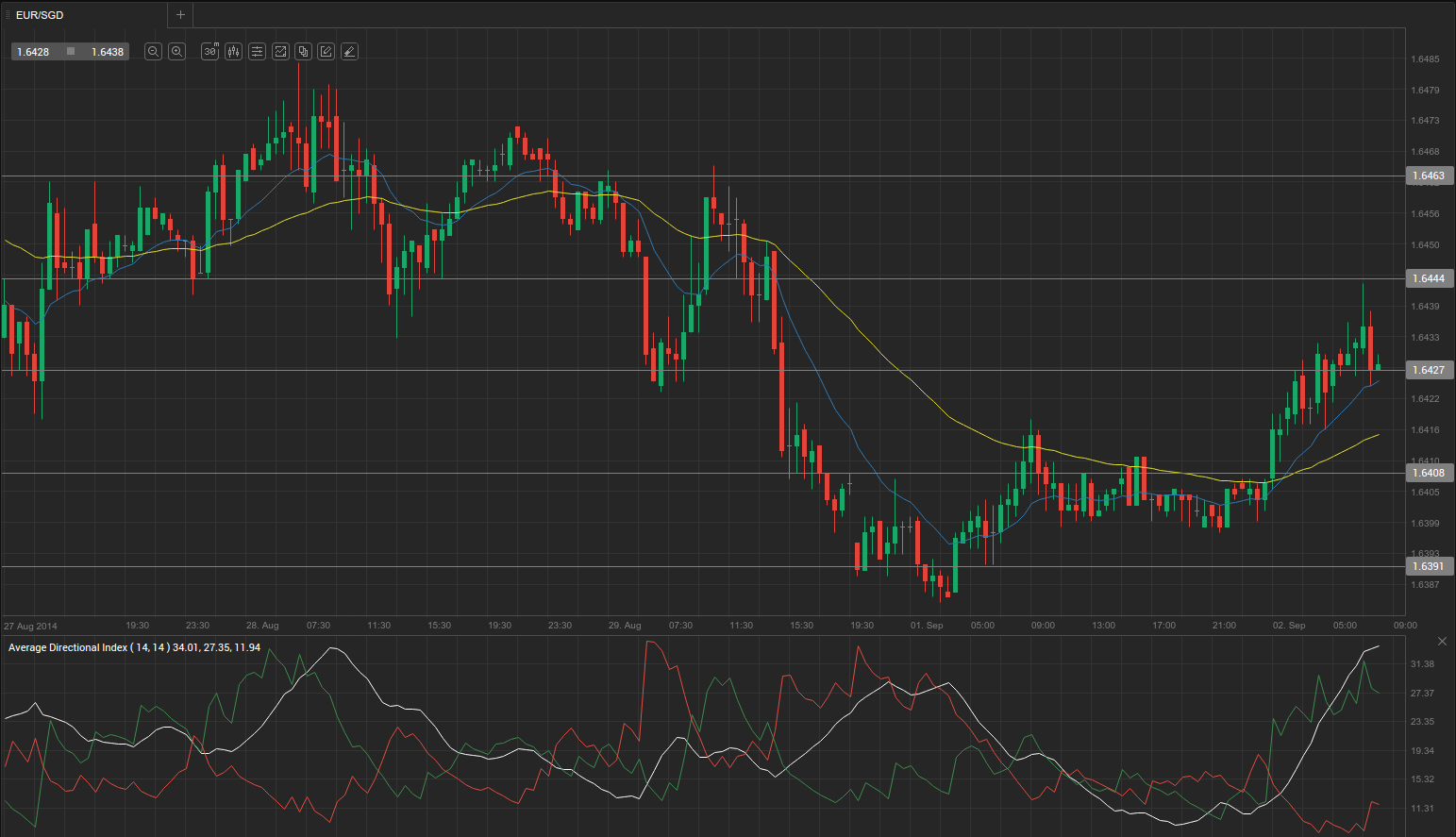 During Monday’s trading session EUR/SGD traded within the range between 1.6425 and 1.6389, the lowest since June 2013, and closed at 1.6410, gaining 0.06% for the day.
During Monday’s trading session EUR/SGD traded within the range between 1.6425 and 1.6389, the lowest since June 2013, and closed at 1.6410, gaining 0.06% for the day.
At 7:58 GMT today, EUR/SGD stood at 1.6435, up 0.18% on the day. The cross held in a daily range of 1.6404-1.6445.
Fundamental view
Eurozone
Spain’s Ministerio de Empleo y Seguridad Social (Ministry of Labor and Social Security) reported today that the number of unemployed people during August rose by 8 100 compared to a decline of 29 800 in July, outperforming projections to have jumped by 26 000.
Spain’s unemployment change is considered as a leading indicator as it gives a month-on-month insight into Spain’s labor market. A healthy labor market boosts consumer confidence, which has a positive effect on consumer spending and thus bolsters economic activity. Therefore, rising or higher-than-expected values are generally seen as bearish for the euro, and vice versa.
At 09:00 GMT, Eurostat will report on the Eurozone’s producer inflation in July. According to preliminary estimates, producer prices probably fell by 0.1% on a monthly basis, compared to a 0.1% gain in June. Year-on-year, PPI is expected to come in at -1.1%, compared to -0.8% a month earlier. If confirmed, this would be the highest deflation since April.
The PPI is an output index – it measures price changes from the makers of a product. Unlike CPI, these price changes are measured from the seller’s perspective. The PPIs are used as an aspect of output for the seller and as a cost factor for the buyer. PPI is considered as a leading indicator of consumer price inflation as inflationary pressures on producers are then passed on to retailers and ultimately – to consumers. The PPI does not only serve as an early indicator of inflationary pressures in the economy before it reaches the consumer, but it can also record the evolution of prices over longer time periods.
Singapore
Singapore Institute of Purchasing & Materials Management is expected to report at 13:30 GMT that Singapores manufacturing sector probably grew at a slower pace in August from a month earlier.
The corresponding SIPMM Manufacturing PMI will register at 50.9, down from 51.5 in July, according to analysts forecasts. A reading above the threshold level of 50 signifies an expansion of the respective sector, and vice versa. Rising values, and especially better-than-expected ones, are deemed bullish for the local currency.
Technical view
According to Binary Tribune’s daily analysis, the central pivot point for the pair is at 1.6408. In case EUR/SGD manages to breach the first resistance level at 1.6427, it will probably continue up to test 1.6444. In case the second key resistance is broken, the pair will probably attempt to advance to 1.6463.
If EUR/SGD manages to breach the first key support at 1.6391, it will probably continue to slide and test 1.6372. With this second key support broken, movement to the downside will probably continue to 1.6355.
The mid-Pivot levels for Monday are as follows: M1 – 1.6364, M2 – 1.6382, M3 – 1.6400, M4 – 1.6418, M5 – 1.6436, M6 – 1.6454.
In weekly terms, the central pivot point is at 1.6442. The three key resistance levels are as follows: R1 – 1.6484, R2 – 1.6568, R3 – 1.6610. The three key support levels are: S1 – 1.6358, S2 – 1.6316, S3 – 1.6232.






